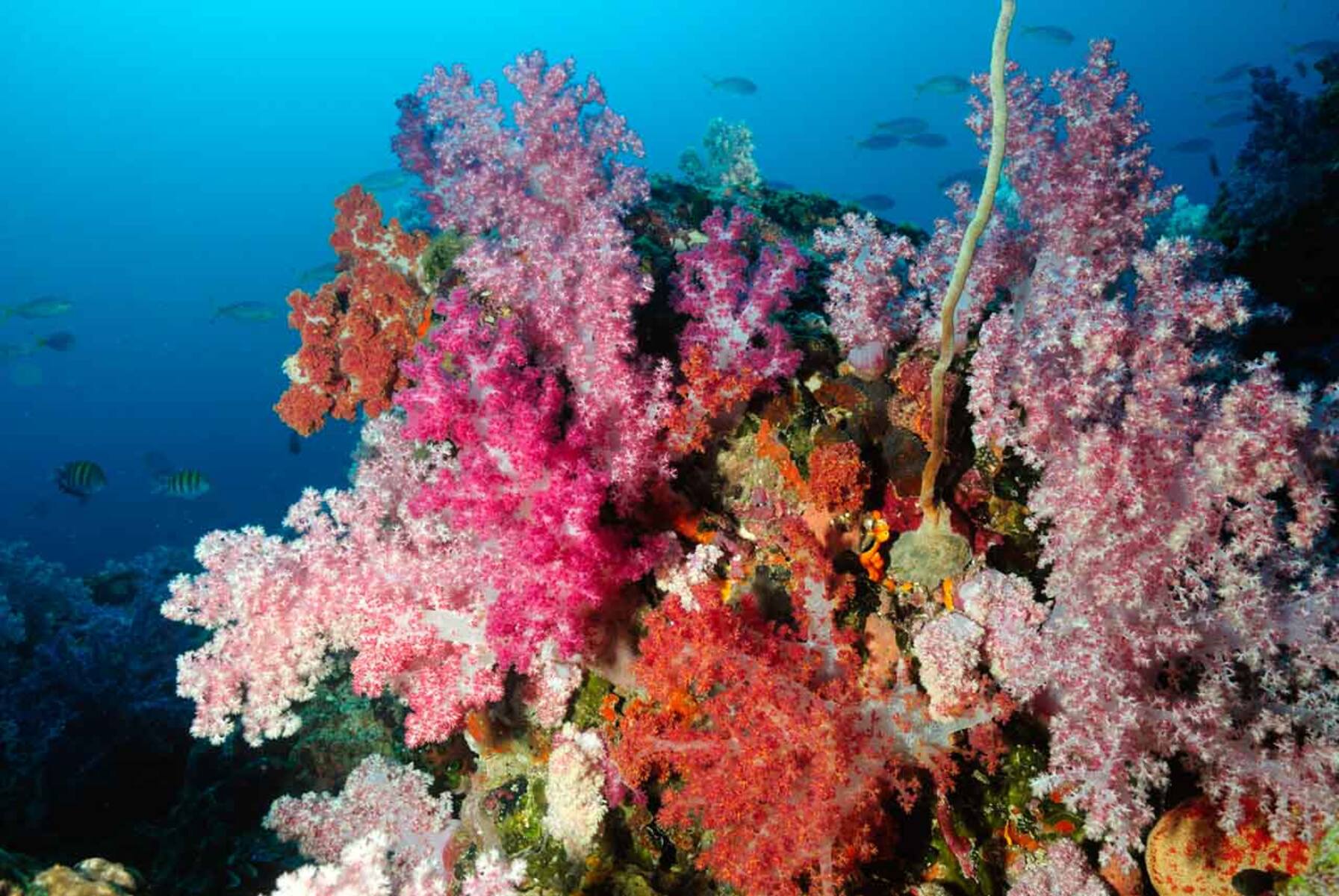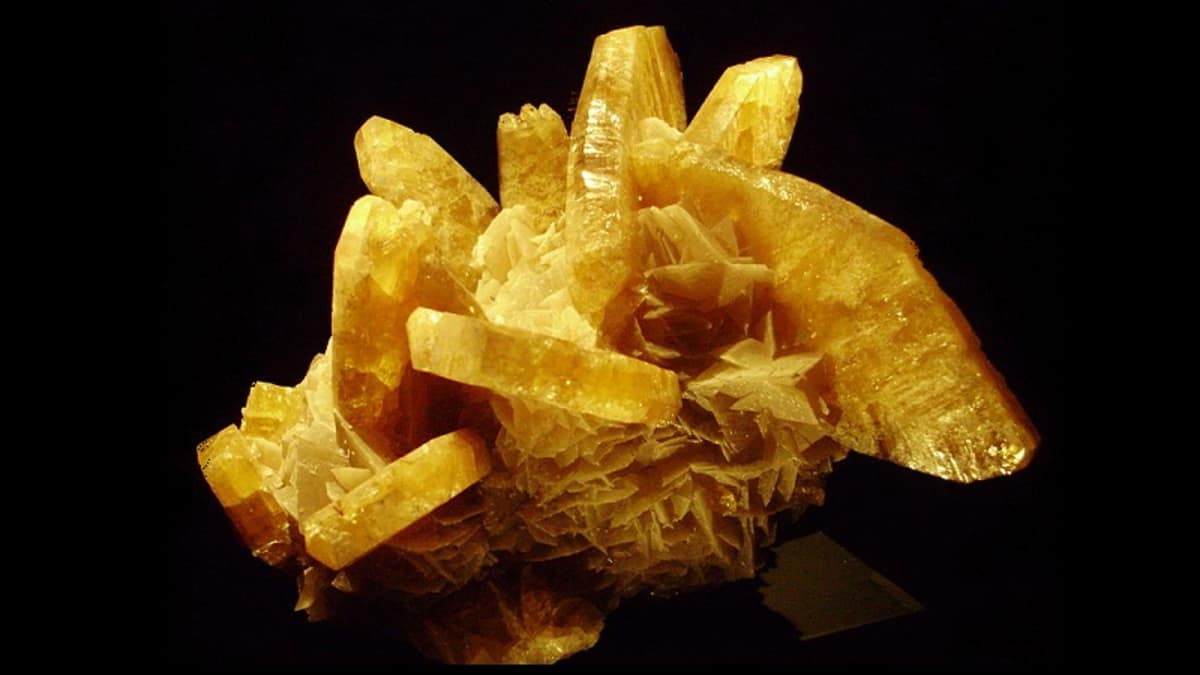
The Gulf of Aden, located in the Arabian Sea between Yemen and Somalia, is not only a crucial shipping route connecting the Red Sea to the Indian Ocean but also a treasure trove of natural wonders. One of the most captivating features of the Gulf of Aden is its vibrant and diverse coral reefs. These reefs are home to a myriad of marine species, offering a glimpse into the mesmerizing world beneath the surface.
In this article, we will explore 20 intriguing facts about the Gulf of Aden reefs that will leave you in awe of their beauty and significance. From astonishing biodiversity to unique geological formations, there is much to discover about these underwater marvels. So, let’s dive deep into the fascinating world of the Gulf of Aden reefs and unravel their secrets.
Key Takeaways:
- Dive into the Gulf of Aden reefs to discover a world of vibrant marine life and rare species, but be aware of the threats they face from climate change and overfishing.
- The Gulf of Aden’s strategic location has historical, cultural, and geopolitical significance, making it a hub for trade, research, and international cooperation.
The Gulf of Aden is home to a diverse range of coral reefs.
Stretching along the southern coast of Yemen and the northern coast of Somalia, the Gulf of Aden is renowned for its stunning coral reefs. These reefs serve as vital ecosystems, providing habitats for a wide variety of marine life.
The Gulf of Aden is located at the entrance of the Red Sea.
Situated between the Arabian Peninsula and the Horn of Africa, the Gulf of Aden serves as a gateway to the Red Sea. Its strategic location has made it a significant maritime route for centuries.
Gulf of Aden reefs are rich in biodiversity.
The reefs in the Gulf of Aden are teeming with a remarkable variety of marine species. From vibrant corals to colorful fish, these reefs harbor an extensive range of biodiversity, contributing to the overall health of the marine ecosystem.
The Gulf of Aden is a popular destination for divers and snorkelers.
Enthusiasts from around the world flock to the Gulf of Aden to explore its captivating underwater world. The crystal-clear waters and abundant marine life make it an ideal spot for diving and snorkeling adventures.
Gulf of Aden reefs face numerous threats.
Despite their ecological significance, the reefs in the Gulf of Aden are under constant threat. Factors such as climate change, pollution, and overfishing pose serious risks to the delicate balance of these ecosystems.
Gulf of Aden reefs are home to rare and unique species.
Many rare and unique species can be found in the Gulf of Aden reefs. From elusive seahorses to fascinating sea turtles, these reefs provide a sanctuary for extraordinary marine life.
The Gulf of Aden is an important breeding ground for marine animals.
Several marine species rely on the Gulf of Aden reefs as crucial breeding grounds. These reefs offer shelter, food, and protection for the reproduction and development of various marine animals.
The Gulf of Aden is a hotspot for whale shark sightings.
Whale sharks, the largest fish species in the world, are frequent visitors to the Gulf of Aden. Divers and researchers have the opportunity to encounter these majestic creatures in their natural habitat.
Gulf of Aden reefs are affected by coral bleaching.
Like many coral reefs worldwide, those in the Gulf of Aden are vulnerable to coral bleaching. This phenomenon, caused by rising water temperatures, can result in the death of corals and impact the overall health of the reefs.
The Gulf of Aden is an important trade route for maritime commerce.
Due to its strategic location, the Gulf of Aden has been a vital trade route for centuries. It connects the Red Sea to the Indian Ocean, serving as a passage for international maritime commerce.
Gulf of Aden reefs provide crucial coastal protection.
The coral reefs in the Gulf of Aden act as natural barriers, protecting coastal areas from erosion and storm damage. They absorb the impact of strong waves and help maintain the stability of the shoreline.
The Gulf of Aden is known for its strong currents.
The Gulf of Aden experiences powerful currents, making it a challenging environment for navigation. These currents play a significant role in shaping the underwater landscape of the reefs.
Gulf of Aden reefs are a paradise for underwater photographers.
The vibrant colors and diverse marine life make the Gulf of Aden reefs a dream destination for underwater photographers. Capturing the beauty and intricacy of these underwater ecosystems is a thrilling experience.
The Gulf of Aden is a popular route for migratory marine species.
Many migratory marine species, including whales, dolphins, and various fish, pass through the Gulf of Aden during their seasonal migrations. These reefs provide a temporary habitat, attracting these remarkable creatures.
Illegal fishing poses a threat to Gulf of Aden reefs.
Illegal fishing activities, such as overfishing and the use of destructive methods, pose a significant threat to the sustainability of the Gulf of Aden reefs. Conservation efforts are essential to protect the fragile balance of these ecosystems.
The Gulf of Aden has significant historical and cultural importance.
The Gulf of Aden has historical and cultural significance, with numerous ancient civilizations thriving along its shores. It has been a hub of trade, exploration, and human activity for centuries.
Gulf of Aden reefs provide valuable scientific research opportunities.
Scientists and researchers are drawn to the Gulf of Aden reefs for their unique ecological characteristics. Studying these reefs provides valuable insights into the impacts of environmental changes on marine ecosystems.
The Gulf of Aden is a region of geopolitical importance.
Due to its strategic location, the Gulf of Aden has geopolitical significance. It has been a focal point for international cooperation and efforts to combat piracy and maintain maritime security.
The Gulf of Aden is part of the protected area network.
Efforts to conserve and protect the Gulf of Aden reefs have led to the establishment of protected areas. These designated zones help safeguard the biodiversity and ecological integrity of the reefs.
The Gulf of Aden reefs are a source of economic benefits.
The vibrant ecosystems of the Gulf of Aden provide economic benefits to coastal communities. Activities such as tourism, fishing, and research generate income and opportunities for local economies.
Conclusion
In conclusion, the Gulf of Aden reefs are truly fascinating and hold a wealth of intrigue. From their incredible biodiversity to their importance in supporting local communities, these reefs are vital to the overall health and balance of the marine ecosystem in the region. The Gulf of Aden is not only a haven for marine life but also presents unique opportunities for scientific research and exploration. As efforts are being made to protect and conserve these precious ecosystems, it is our responsibility to ensure their long-term survival for future generations to enjoy. So, whether you are an avid diver, a nature enthusiast, or simply someone who appreciates the wonders of the underwater world, the Gulf of Aden reefs are definitely worth exploring and protecting.
FAQs
1. Are the Gulf of Aden reefs home to rare or endangered species?
Yes, the Gulf of Aden reefs are home to a number of rare and endangered species. Some examples include the humphead wrasse, the green sea turtle, and the Arabian carpetshark. Efforts are being made to protect these species and their habitats to ensure their survival.
2. Can I go diving to explore the Gulf of Aden reefs?
Yes, diving is possible in the Gulf of Aden, and it offers a unique opportunity to explore the vibrant coral reefs and encounter a wide variety of marine life. However, it is important to follow proper diving protocols and regulations to minimize your impact on the reefs and preserve their fragile ecosystem.
3. What are the threats facing the Gulf of Aden reefs?
The Gulf of Aden reefs face several threats, including overfishing, pollution, climate change, and unsustainable tourism practices. These factors can lead to coral bleaching, habitat destruction, and the loss of marine biodiversity. Conservation measures are being implemented to address these threats and protect the reefs.
4. Are there any conservation efforts in place to protect the Gulf of Aden reefs?
Yes, there are various conservation efforts in place to protect the Gulf of Aden reefs. Local organizations, governments, and international bodies are working together to establish marine protected areas, implement sustainable fishing practices, raise awareness, and promote responsible tourism to ensure the long-term survival of these valuable ecosystems.
5. Can I contribute to the conservation of the Gulf of Aden reefs?
Absolutely! There are many ways you can contribute to the conservation of the Gulf of Aden reefs. You can support local conservation organizations, participate in community-led initiatives, practice responsible diving and snorkeling, reduce your carbon footprint, and spread awareness about the importance of protecting these fragile ecosystems.
Exploring Gulf of Aden's captivating reefs is just the beginning of your underwater adventures. Dive into more fascinating marine facts with our articles on the Red Sea's vibrant ecosystems, Gulf of Mannar's incredible marine biodiversity, and Indian Ocean's vast underwater wonders. Each destination holds unique treasures waiting to be discovered by curious minds like yours. So, keep your curiosity afloat and embark on a journey through our collection of marine marvels, unearthing the secrets hidden beneath the waves.
Was this page helpful?
Our commitment to delivering trustworthy and engaging content is at the heart of what we do. Each fact on our site is contributed by real users like you, bringing a wealth of diverse insights and information. To ensure the highest standards of accuracy and reliability, our dedicated editors meticulously review each submission. This process guarantees that the facts we share are not only fascinating but also credible. Trust in our commitment to quality and authenticity as you explore and learn with us.


